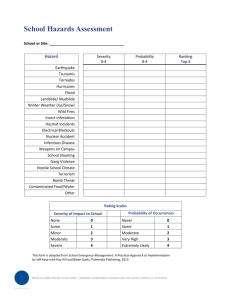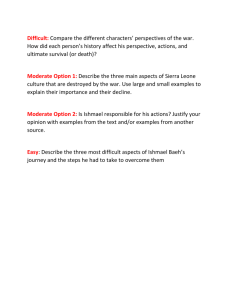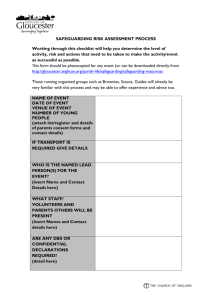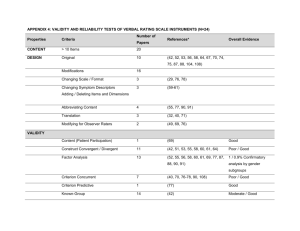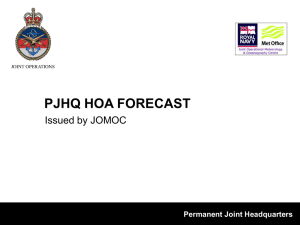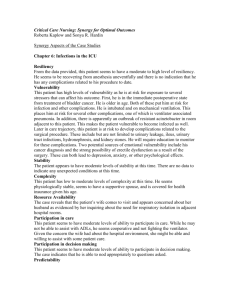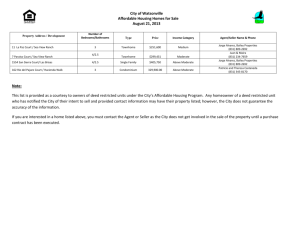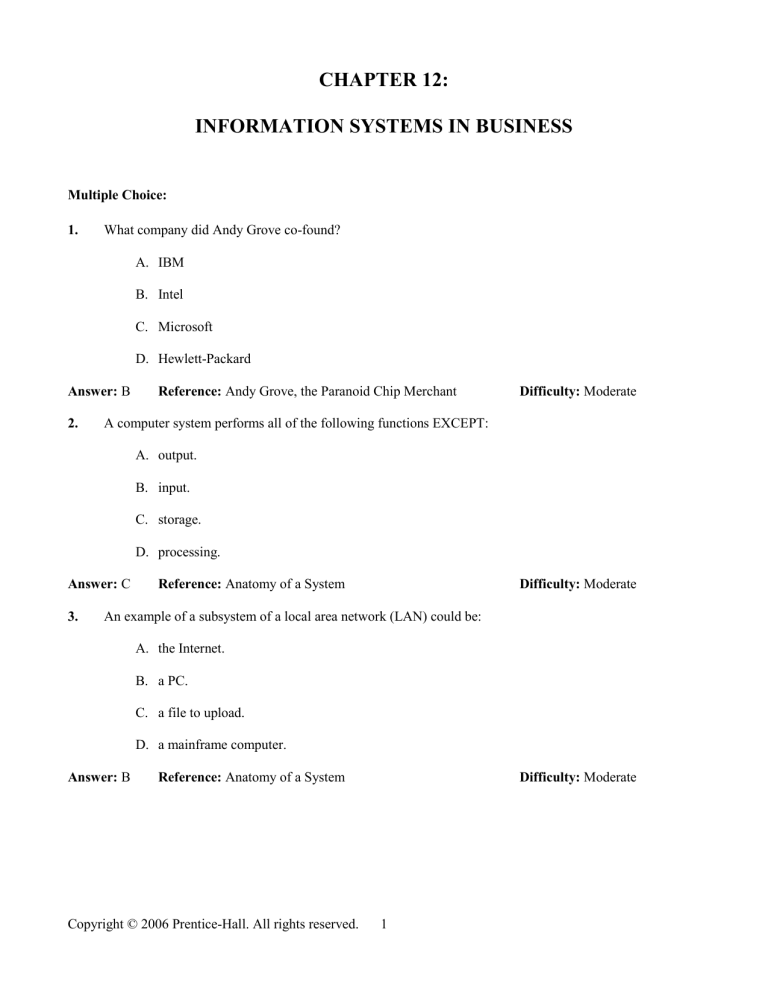
CHAPTER 12:
INFORMATION SYSTEMS IN BUSINESS
Multiple Choice:
1.
What company did Andy Grove co-found?
A. IBM
B. Intel
C. Microsoft
D. Hewlett-Packard
Answer: B
2.
Reference: Andy Grove, the Paranoid Chip Merchant
Difficulty: Moderate
A computer system performs all of the following functions EXCEPT:
A. output.
B. input.
C. storage.
D. processing.
Answer: C
3.
Reference: Anatomy of a System
Difficulty: Moderate
An example of a subsystem of a local area network (LAN) could be:
A. the Internet.
B. a PC.
C. a file to upload.
D. a mainframe computer.
Answer: B
Reference: Anatomy of a System
Copyright © 2006 Prentice-Hall. All rights reserved.
Difficulty: Moderate
1
Chapter 12: Information Systems In Business
4.
A LAN could be a subsystem of:
A. the Internet.
B. a PC.
C. a printer.
D. a server on the LAN.
Answer: A
5.
Reference: Anatomy of a System
Difficulty: Moderate
The output of one subsystem is often the ____________ to another subsystem.
A. input
B. information system
C. storage
D. memory
Answer: A
6.
Reference: Anatomy of a System
Difficulty: Moderate
___________ activities support a business’s primary activities.
A. Outsourced
B. Efficiency
C. Core
D. Secondary
Answer: D
7.
Reference: The Value Chain Model
Difficulty: Moderate
The ___________ of a business collects data and processes it into necessary information.
A. materials processors
B. management
C. production staff
D. information system
Answer: D
Reference: Business Organizations as Systems
Copyright © 2006 Prentice-Hall. All rights reserved.
2
Difficulty: Easy
Chapter 12: Information Systems In Business
8.
A company’s environment consists of all EXCEPT:
A. competitors.
B. employees.
C. customers.
D. stockholders.
Answer: B
9.
Reference: Business Organizations as Systems
Difficulty: Moderate
A subsystem that supports the information needs of other business processes within an organization is
known as a(n):
A. information system.
B. expert system.
C. technology management system.
D. technology information department.
Answer: A
10.
Reference: Information Systems
Difficulty: Moderate
An example of input of an information system would be a:
A. printer.
B. report.
C. customer name for data entry.
D. plotter.
Answer: C
11.
Reference: Information Systems
Difficulty: Easy
An example of output of an information system would be a:
A. printer.
B. report.
C. PC tablet.
D. plotter.
Answer: B
Reference: Information Systems
Copyright © 2006 Prentice-Hall. All rights reserved.
Difficulty: Easy
3
Chapter 12: Information Systems In Business
12.
An accounting and record-keeping system that keeps track of daily transactions necessary to operate a
business is known as a(n):
A. information system.
B. subset of sound business practices.
C. transaction processing system.
D. technology information department.
Answer: C
13.
Reference: Information Systems for Business Transactions
Difficulty: Moderate
The first step in the transaction processing cycle is:
A. data processing.
B. document and report preparation.
C. data entry.
D. user inquiry.
Answer: C
14.
Reference: Information Systems for Business Transactions
Difficulty: Moderate
EDI stands for:
A. electronic data interchange.
B. electrical data interchange.
C. electronic data on the Internet.
D. electron data interchangeably.
Answer: A
15.
Reference: Information Systems for Business Transactions
Difficulty: Moderate
What is the process of gathering data and then processing it at a later time?
A. Real-time processing
B. Later entry data processing
C. Batch processing
D. Entry specific processing
Answer: C
Reference: Information Systems for Business Transactions
Copyright © 2006 Prentice-Hall. All rights reserved.
4
Difficulty: Moderate
Chapter 12: Information Systems In Business
16.
Scanning and identifying library books with a scanning device upon checkout is an example of:
A. processing.
B. acquisition.
C. storage and retrieval.
D. transmission.
Answer: C
17.
Reference: Information Technology in Information Systems
Difficulty: Challenging
What type of information technology function is the creation of a monthly sales report shown in an
understandable chart and an easy-to-read spreadsheet format developed for a sales manager?
A. processing
B. presentation
C. acquisition
D. storage and retrieval
Answer: B
18.
Reference: Information Technology in Information Systems
Difficulty: Moderate
Manipulating and organizing information in a way that makes it useful for a user is the information
technology function of:
A. presentation.
B. storage and retrieval.
C. processing.
D. acquisition.
Answer: C
19.
Reference: Information Technology in Information Systems
Difficulty: Moderate
An instructor distributes accumulated and processed data about a group of students to another instructor;
this is an example of the information technology function of:
A. transmission.
B. storage and retrieval.
C. processing.
D. acquisition.
Answer: A
Reference: Information Technology in Information Systems
Copyright © 2006 Prentice-Hall. All rights reserved.
5
Difficulty: Moderate
Chapter 12: Information Systems In Business
20.
An enterprise resource planning (ERP) system increases the:
A. quality of the data of a transaction subsystem.
B. degree of error discovery of a transaction subsystem.
C. speed of a company’s entire transaction processing cycle.
D. amount of paperwork generated by a business.
Answer: C
21.
Reference: Enterprise Resource Planning
Difficulty: Challenging
Which of the following does NOT typically describe the attributes of an ERP system?
A. Simplistic
B. Complex
C. Large
D. Expensive
Answer: A
22.
Reference: Enterprise Resource Planning
Difficulty: Challenging
The sale of a dress in a women’s boutique and the result that one less item is now in stock would be
recorded in a(n) ____________ processing system.
A. accounts receivable transaction
B. information
C. accounts payable transaction
D. inventory control transaction
Answer: D
Reference: How it Works: 12.1 The Information Flow Through a Transaction Processing System
Difficulty: Moderate
23.
A business’ income and expenses are organized in reports so that the health of the company can be
determined; this information is recorded in a(n):
A. general ledger transaction processing system.
B. accounts payable transaction processing system.
C. inventory control transaction processing system.
D. payroll transaction processing system.
Answer: A
Reference: How it Works: 12.1 The Information Flow Through a Transaction Processing System
Difficulty: Moderate
Copyright © 2006 Prentice-Hall. All rights reserved.
6
Chapter 12: Information Systems In Business
24.
When two different businesses coordinate and form an agreement to work together, it is known as a:
A. strategic plan.
B. business alliance.
C. business cooperative.
D. corporation.
Answer: B
25.
Reference: Supply Chain Management and Outsourcing
Difficulty: Moderate
An information system that supports international business activities is called a(n):
A. international information system.
B. global business system.
C. globally-linked business system.
D. Internet supplier system.
Answer: A
26.
Reference: Supply Chain Management and Outsourcing
Difficulty: Moderate
When an instructor creates a new computer course to be added to the other computer courses offered by the
department and must determine the number of textbooks to order, she is making a(n):
A. structured decision.
B. unstructured decision.
C. semistructured decision.
D. management level decision.
Answer: C
27.
Reference: Information Technology and Management
Difficulty: Challenging
Middle managers primarily manage at the __________ level.
A. tactical
B. operational
C. top management
D. strategic
Answer: A
Reference: Information Technology and Management
Copyright © 2006 Prentice-Hall. All rights reserved.
7
Difficulty: Challenging
Chapter 12: Information Systems In Business
28.
Individuals that are part of a board of directors of a company act at the __________ level.
A. tactical
B. operational
C. middle management
D. strategic
Answer: D
29.
Reference: Information Technology and Management
Difficulty: Moderate
MIS stands for:
A. management Internet system.
B. marketing Internet system.
C. marketing and implementation software.
D. management information system.
Answer: D
30.
Reference: Management Information Systems
Difficulty: Moderate
If you were in the forest searching for your way back to a road, you might take advantage of a(n):
A. GIS.
B. MIS.
C. EDI.
D. DSS.
Answer: A
31.
Reference: Decision Support Systems
Difficulty: Easy
Top managers may use a(n) ____________, a combination of a MIS and a DSS, to support their decision
making.
A. GIS.
B. EIS.
C. EDI.
D. CAM.
Answer: B
Reference: Expert Systems
Copyright © 2006 Prentice-Hall. All rights reserved.
Difficulty: Moderate
8
Chapter 12: Information Systems In Business
32.
When a system is designed based on the knowledge of a recognized professional in a particular field, it is
known as a(n):
A. executive information system (EIS).
B. knowledge system (KS).
C. expert system (ES).
D. management information system (MIS).
Answer: C
33.
Reference: Expert Systems
Difficulty: Moderate
When a company develops a new product that competitors find extremely difficult to match or improve
upon, the original company has created a:
A. competitive advantage.
B. switching cost mechanism.
C. barrier to entry.
D. high efficiency quota.
Answer: C
34.
Reference: Strategic Information Systems
Difficulty: Moderate
Too many reports! Too many printouts! Too many particular details! This is known as:
A. Internet information system.
B. system overload.
C. information overload.
D. information surplus.
Answer: C
35.
Reference: Information Systems in Perspective
Difficulty: Moderate
To economically determine if an information system project is worthwhile for a company to undertake,
managers may use:
A. Gantt charts.
B. program evaluation and review technique (PERT) charts.
C. cost-benefit analysis.
D. expert systems.
Answer: C
Reference: Allocating Resources
Copyright © 2006 Prentice-Hall. All rights reserved.
Difficulty: Moderate
9
Chapter 12: Information Systems In Business
36.
The first step of IT planning is called:
A. MIS planning.
B. infrastructure planning.
C. organizational information requirements planning.
D. strategic planning.
Answer: D
37.
Reference: Strategic Planning
Difficulty: Moderate
Types of charts or diagrams that are used by managers to identify problems in a project include all of the
following EXCEPT:
A. Gantt.
B. program evaluation and review technique (PERT).
C. critical path method (CPM).
D. electronic data interchange (EDI).
Answer: D
38.
Reference: Project Planning
Difficulty: Moderate
Social responsibility applies to:
A. individuals and companies.
B. companies
C. the community.
D. customers.
Answer: A
39.
Reference: Social Responsibility in the Information Age
Difficulty: Moderate
To guide behavior of employees in a socially responsible manner, many companies have created:
A. codes of ethics.
B. management rules.
C. insider trading restrictions.
D. code of conduct.
Answer: A
Reference: Social Responsibility in the Information Age
Copyright © 2006 Prentice-Hall. All rights reserved.
10
Difficulty: Moderate
Chapter 12: Information Systems In Business
Fill in the Blank:
40.
A system performs three basic functions: input, processing, and ____________.
Answer: output
41.
Difficulty: Easy
Reference:
Information
Systems
for
Business
Transactions
Reference: Information Technology in Information Systems
Reference: Information Technology in Information Systems
Processing transactions as they occur is known as ____________.
Answer: real-time processing
Difficulty: Challenging
48.
Reference: Business Organizations as Systems
The information technology process that accumulates information for later use and then accesses it when
needed is known as ____________.
Answer: storage and retrieval
Difficulty: Challenging
47.
Difficulty: Moderate
In the context of business information systems, information technology performs five functions:
acquisition, ____________, storage, presentation, and transmission.
Answer: processing
Difficulty: Challenging
46.
Reference: Business Organizations as Systems
A(n) ____________ system in a business is intended to help individuals gather and use information,
communicate with others inside and outside the organization, and make effective decisions.
Answer: information
Difficulty: Moderate
45.
Difficulty: Challenging
A business’ ____________ department recruits, hires, trains, and develops the individuals within the firm.
Answer: Human Resources
44.
Reference: Anatomy of a System
The external environment that a business operates in includes customers, stockholders, competitors,
suppliers, banks, and ____________ agencies (which often regulate the business).
Answer: government
43.
Difficulty: Easy
Two additional functions of a system are ____________ and control.
Answer: feedback
42.
Reference: Anatomy of a System
Reference: Information Technology for Business Transactions
An example of a typical ____________ activity is the process of running the monthly payroll for
employees.
Answer: batch processing
Difficulty: Moderate
Reference: Information Technology for Business Transactions
Copyright © 2006 Prentice-Hall. All rights reserved.
11
Chapter 12: Information Systems In Business
49.
ERP stands for ____________.
Answer: enterprise resource planning
50.
Reference: How it Works: 12.1 The Information Flow Through a Transaction
Difficulty: Challenging
A(n) ____________ transaction processing system involves keeping track of employee work hours and
producing paychecks.
Answer: payroll
Processing System
52.
Reference: How it Works: 12.1 The Information Flow Through a Transaction
Difficulty: Challenging
____________ is the direct, computer-to-computer exchange of standard business transaction documents; it
is based on international standards.
Answer: EDI or Electronic data interchange
Difficulty: Moderate
53.
Reference: Information Technology and Management
Reference: Information Technology and Management
Reference: Information Technology and Management
Difficulty: Challenging
Difficulty: Moderate
DSS stands for ____________.
Answer: decision support system
59.
Difficulty: Moderate
A manager at the ____________ level deals with supervising the day-in-day-out activities of a business.
Answer: operational
58.
Difficulty: Challenging
Three typical management levels exist: operational, tactical, and ____________.
Answer: strategic
57.
Reference: Information Technology and Management
When a unique situation arises that a manager must deal with, she is faced with a(n) ____________
decision.
Answer: unstructured
56.
Reference: Supply Chain Management and Outsourcing Difficulty: Challenging
When a bookstore needs to reorder textbooks for a class that is taught every semester by the same
professor, the manager will most likely make a(n) ____________ decision.
Answer: structured
55.
Reference: Supply Chain Management and Outsourcing
A bookstore working closely with FedEx to handle the store’s delivery logistics is an example of a(n)
____________.
Answer: business alliance
54.
Difficulty: Moderate
A(n) ____________ transaction processing system involves keeping records of amounts owed by
customers.
Answer: accounts receivable
Processing System
51.
Reference: Enterprise Resource Planning
Reference: Decision Support Systems
Difficulty: Moderate
GDSS stands for ____________.
Answer: group decision support system Reference: Decision Support Systems
Copyright © 2006 Prentice-Hall. All rights reserved. 12
Difficulty: Moderate
Chapter 12: Information Systems In Business
60.
GIS stands for ____________.
Answer: geographic information system
61.
Reference: Expert Systems
Reference: Information Systems in Perspective
Reference: Project Planning
Difficulty: Challenging
Reference: Project Planning
Difficulty: Challenging
Three time estimates—optimistic, pessimistic, and most likely—are incorporated into a(n) ____________
diagram.
Answer: PERT
69.
Difficulty: Challenging
CPM, or ____________, keeps track of a project’s schedule.
Answer: critical path method
68.
Reference: Allocating Resources
A(n) ____________ visually represents a project schedule.
Answer: Gantt chart
67.
Reference: Describing the Information Technology Infrastructure
The third phase of information technology planning, ____________, is the process of selecting the
information system projects in which to invest time and money.
Answer: resource allocation
66.
Difficulty: Moderate
A company’s information systems hardware, software, and telecommunications equipment; its staff and
personnel; and its organizational structure are known as the IT ____________.
Answer: infrastructure
Difficulty: Challenging
65.
Difficulty: Moderate
When an organization defines its mission; clearly identifies its environment, strengths, and weaknesses; and
defines its competitive strategy, it is implementing the first phase of IT planning, called ____________.
Answer: strategic planning Reference: Strategic Planning
64.
Difficulty: Challenging
Creating a system that replicates the knowledge of a professional in the automotive industry and using the
system to train new members of an organization is an example of a(n) ____________.
Answer: ES or expert system
63.
Difficulty: Moderate
Managers can use a(n) ____________ information system to monitor crucial economic and social trends
affecting their organization.
Answer: executive
62.
Reference: Decision Support Systems
Reference: Project Planning
Difficulty: Challenging
The traditional stakeholders of any business include the employees, suppliers, customers, local community,
and ____________.
Answer: stockholders
Difficulty: Challenging
Reference: Social Responsibility in the Information Age
Copyright © 2006 Prentice-Hall. All rights reserved.
13
Chapter 12: Information Systems In Business
Matching:
70.
Match the following transaction processing systems to their definitions:
I.
sales transaction
II. inventory control
B. employee hours and paycheck printing
III. accounts receivable
C. how many of an item are in stock
IV. accounts payable
D. overall income and expenses
V. purchasing
E. what customers owe
VI. general ledger
F. new stock from vendors
VII. payroll
G. record of items or services sold
Answers: G, C, E, A, F, D, B
71.
A. print a check for a vendor
Reference: How it Works
Difficulty: Moderate
Put the following transaction processing steps in order:
I.
storing and updating data
A. first
II. processing the data
B. second
III. user inquiry
C. third
IV. data entry
D. fourth
V. document preparation
E. fifth
Answers: C, B, E, A, D
Reference: IS for Business Transactions
Copyright © 2006 Prentice-Hall. All rights reserved.
14
Difficulty: Moderate
Chapter 12: Information Systems In Business
72.
Match the decisions and management levels to their definitions and responsibilities:
I.
structured decision
A. short-term plans for the next year or so
II. semistructured decision
B. unique, unknown circumstances
III. unstructured decision
C. day-to-day activities
IV. operational level
D. some uncertainty, some clarity
V. tactical level
E. clearly understandable, established procedures
VI. strategic level
F. long-range, major impact decisions
Answers: E, D, B, C, A, F
Reference: IT and Management
Copyright © 2006 Prentice-Hall. All rights reserved.
15
Difficulty: Moderate

